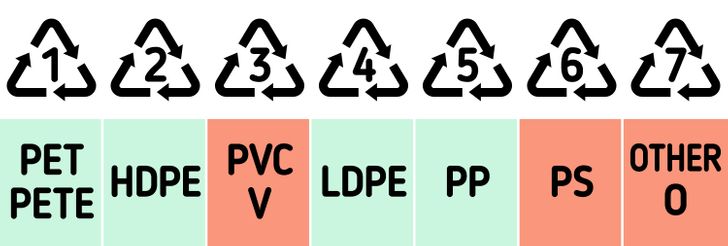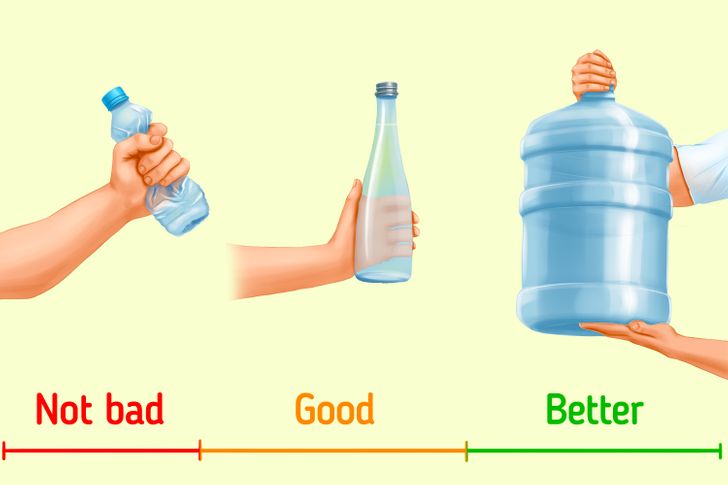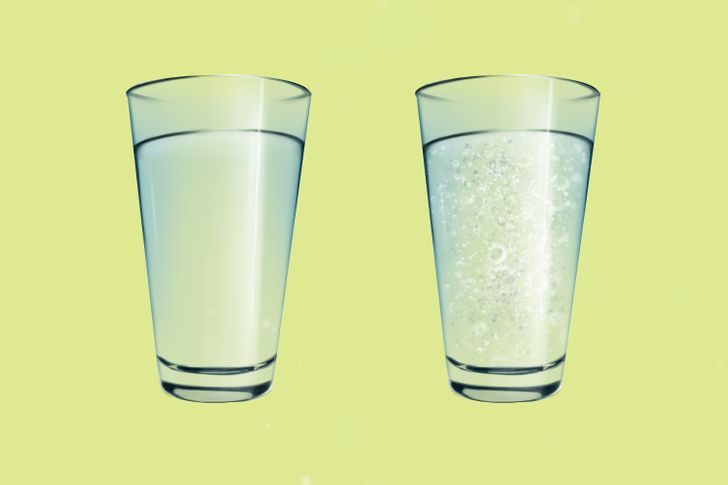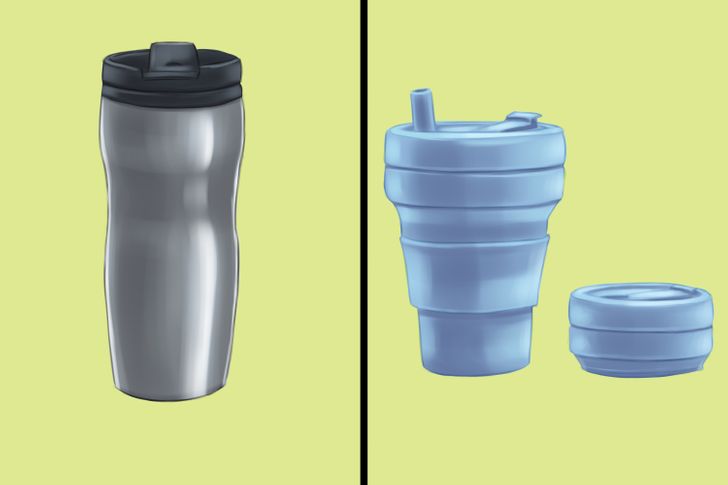How to Choose Bottled Water
It’s quite hard to figure out why one bottle of water is better than another due to complicated inscriptions on the package. That’s why it seems that taking the price and the popularity of the brand as a reference point can be a good workaround in this situation. However, some not-so-pleasant discoveries and tricks of marketers can be waiting for you just around the corner.
5-Minute Crafts is explaining what one should pay attention to when buying bottled water.
The packaging

Most often, bottled water is sold in a plastic package. But plastic can be different, which affects its price and safety. You can determine the type of plastic by the marking on the bottle:
- HDPE and LDPE — this is high-density polyethylene and low-density polyethylene. This plastic is most often used for producing butter containers, food film, and packages for corn flakes. They are considered relatively safe types of plastic.
- PP — this is known as polypropylene. It is used for producing disposable yogurt cups and food containers. A PP container can be heated in a microwave and the plastic won’t react with food or liquid. It’s plastic with a PP marking that can be considered the least dangerous.
- PETE (PET) — this is polyethylene terephthalate. Most plastic containers and packages in your home are likely made of this type of plastic. For example, it is used for 0.5-gallon soda bottles, peanut butter jars, and salad dressing containers. Recycled PET is safe for packaging food and drinks.
- PVC (V) — this is polyvinyl chloride. It’s not recommended to use water bottles made of this type of plastic because it is considered dangerous.
- PS — this is polystyrene. It’s better not to use bottles made of this type of plastic: it’s a styrene polymerization product that can be associated with the formation of cancer cells.
- Other (O) — this is used for all other types of plastic. It’s better not to drink water from a bottle made of this type of plastic because, in general, the use of plastic as a container for food and drinks can be dangerous, especially if it’s a type of plastic that hasn’t been studied completely.
Depending on the type of plastic it is, the packaging indicates its labeling (material identifier), a triangular recycling sign, and a number that corresponds to a specific recycling code that also characterizes the material from which the package is made from.

If you prefer more eco-friendly packaging, it’s better to opt for glass bottles. Glass doesn’t emit chemicals, nor does it absorb anything, even when heated. A glass bottle can be used repeatedly and it’s easier to recycle.
On the other hand, size matters too. For example, instead of buying water in small plastic bottles, it’s better to opt for a cooler and to order water in big refillable bottles that can be 100% recycled. It is convenient to pour water from such a cooler into an individual bottle made of metal, ceramic, or glass so that you can always carry it with you.
The difference between carbonated, mineral, alkalized, and drinking water

- Drinking water is water that can be consumed daily and used for cooking food. Its composition, properties, and degree of purification must comply with certain applicable standards. It should not be confused with fresh water, which may not be drinkable without additional treatment. Water from a drinking fountain in a park can be safer and healthier than that from a mountain spring, even if it is rumored to have medicinal properties.
- Mineral water has a composition of dissolved salts, microelements, and biologically active components. This type of water can be still or sparkling. In general, it has a positive effect on health and can be recommended for use to those suffering from certain diseases as part of therapy. But don’t buy mineral water in a plastic package. It’s also recommended to study the label carefully before buying it — in some cases, manufacturers of mineral water don’t recommend drinking it in big amounts on a daily basis.
- Carbonated water is a drink from minerals or it can be regular water saturated with carbon dioxide gas. Carbonated drinks can affect the absorption of drugs in the gastrointestinal tract, so this water should not be taken with medicine.
- Alkalized water is water that has a higher PH level. It is believed that its use has a positive effect on health.
- Distilled is water that has been purified from mineral salts, organic substances, and other impurities dissolved in it. Distilled drinking water can be consumed, but you should also think about additional sources of minerals.
It’s important to remember that bottled water manufacturers often use regular tap water that has been enhanced in some way. After this, the water is poured into individual bottles and sold in stores on the same shelves along with mineral water.
How to get away from bottled water

The main issue of bottled water is its plastic packaging that can be unsafe for health and not eco-friendly when it comes to recycling. Using an individual bottle, glass, cup, or thermos made from more eco-friendly materials, such as ceramics, glass, stainless steel, or bamboo, can be a good alternative. Foldable silicone cups (the ones shown in the picture above) are also quite convenient since they take up little space and are easy to carry around with you.
In this case, it’s worth thinking about an alternative source of water, like, for example, an additional filtration system that is installed in addition to a usual tap, which will allow you to get clean water right from the tap. It will also allow you to save money and have a more eco-friendly lifestyle.